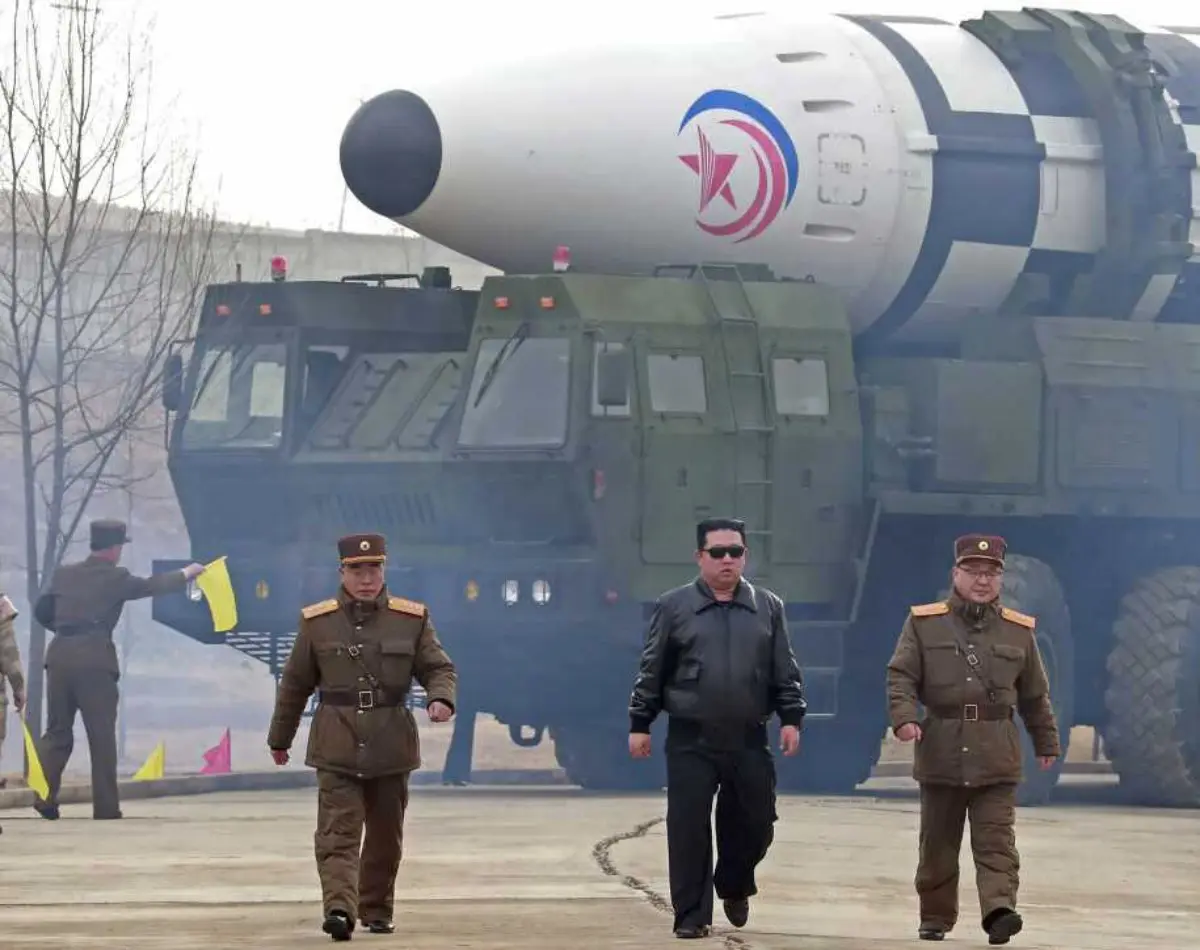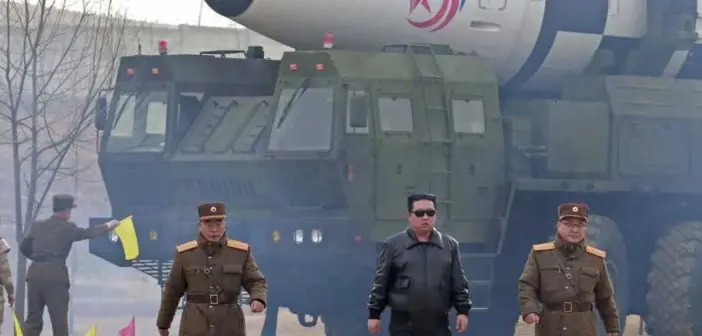
North Korean tested an intercontinental ballistic missile (ICBM) called Hwasong-19 last week that reached an altitude of 7,687 kilometres. South Korea and Japan tracked its flight into space before it splashed down in the ocean between Japan and Russia.
North Korean leader Kim Jong Un ordered the missile test and called it “an appropriate military action”
“I affirm that the Democratic People’s Republic of Korean will never change its line of bolstering up its nuclear forces,” he said in a statement.
The 87-minute flight launched from a site near Pyongyang and flew a distance of around 1,000 kilometres before landing in the sea approximately 200 kilometres west of Japan’s Okushiri Island.
The missile took off on a sharply lofted trajectory intended to test its thrust and stability over much shorter distances relative to the designed range. Seoul-based military analysts said the launch likely happened, possibly with Russian assistant, to test booster improvements on the existing ICBM.
In the same week as the missile launch, North Korea has sent approximately 8,000 soldiers to support Russian operations in Kursk Oblast near that country’s border with Ukraine. US Secretary of Defense Lloyd J. Austin said engaging in combat activities would make them legitimate military targets.
United States within Hwasong-19’s range
North Korea has previously tested a Hwasong-19 ICBM in December 2023. That flight also launched at a sharply raised angle and flew for 73 minutes. Analysts noted that equated to a potential range of 15,000 kilometres on a normal trajectory, putting mainland United States within range.
South Korea, Japan, and the United States condemned the October 31, 2024, launch.
“This launch is a flagrant violation of multiple UN Security Council resolutions,” reads a White House statement. “This launch needlessly raises tensions and risks destabilizing the security situation in the region.”
“(China) has always believed that peace and stability, and promoting a political solution to the peninsula issue are in accordance with the common interests of all sides,” said Foreign Ministry spokesperson Lin Jian.
North Korean state news agency KCNA calls Hwasong-19 “the world’s strongest strategic missile”.
North Korea’s missile programme dates back 40 years
The CNS North Korea Missile Test Database traces the country’s missile programme back to 1984. Since then, it has conducted 264 tests, with the vast majority been in the last ten years. The highest number of launches (40) occurred in 2022.
The bulk don’t didn’t make it out of low-Earth orbit (the boundary is 2,000 kilometres above the Earth’s surface). The International Space Station orbits just over 400 kilometres above Earth. Fourteen launches have past that mark. Eleven has passed the boundary from low-Earth orbit to medium-Earth orbit. Of the number, three North Korean missiles reached an altitude of between 2,000 and 4,000 kilometres, two reached an altitude between 4,001, and 6,000 kilometres, and six reached altitudes of more than 6,000 kilometres. Last week’s test set a new altitude record for a North Korean missile.
The Hwasong-18 is a solid fuel missile launched from a canister carried by a transporter-erector-launcher vehicle. They can be moved and stored in various locations. The country is now working on developing the larger Hwasong-19 ICBM, which is likely to have greater fuel capacity and increased range.
While North Korea has demonstrated the ability launch ICBMs, analyst question its capacity to effectively guide a missile and protect any nuclear warhead as it re-enters the atmosphere
Following last week’s ICBM test, South Korean imposed new sanctions on 11 North Korean individuals and four entities,





